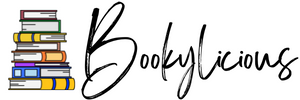Horrifically Inspirational… Women of Horror
Marie Anne Cope reflects on the life and work of four female horror writers
When I was asked to do an extra Into the Darkness show on Calon FM, to celebrate International Women’s Day back in March, the voices started arguing over who would be best served up for such a momentous occasion. Of course, there are many women deserving of mention, but with it being a horror-themed show, I deemed it best to focus on those ladies who have terrified, who have tantalised, who have sent shivers down our spines and who have made their mark on horror literature in some way. And so, dear reader, here follows my ode to four sublimely influential women of horror.
Ann Radcliffe (1764–1823)
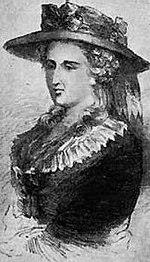 Ann Radcliffe was born Ann Ward, in Holborn, London, and she married journalist William Radcliffe, part owner and editor of the English Chronicle. William was prone to working late, and so Ann sought to amuse herself by writing stories, which she would then read to her husband on his return.
Ann Radcliffe was born Ann Ward, in Holborn, London, and she married journalist William Radcliffe, part owner and editor of the English Chronicle. William was prone to working late, and so Ann sought to amuse herself by writing stories, which she would then read to her husband on his return.
Ann wrote five novels during her lifetime, all of which she classed as romances. Scholars, on the other hand, saw her as the pioneer of the Gothic novel, and the way in which she explained the supernatural elements of her novels enabled Gothic fiction to become respectable in the late 18th century.
The average earnings for an author in the 1790s were around £10 per manuscript. Ann received £500 for The Mysteries of Udolpho and £800 for The Italian, making her the highest paid professional writer of the decade.
Ann didn’t believe in differentiating between the roles of her male and female characters, choosing instead to see them as equals. By doing this, she created roles that had previously been unheard of for women in literature.
Ann Radcliffe had a huge influence on many later authors, including the Marquis de Sade, Edgar Allan Poe, Sir Walter Scott and Fyodor Dostoyevsky, who once said:
‘I used to spend the long winter hours before bed listening (for I could not yet read), agape with ecstasy and terror, as my parents read aloud to me from the novels of Ann Radcliffe. Then I would rave deliriously about them in my sleep.’
Mary Shelley (1797–1851)
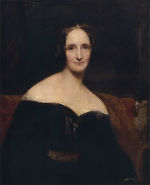 Mary Shelley was born Mary Wollstonecraft Godwin in Somers Town, London and, thanks to her father’s tutoring of her, received an unusual and advanced education for a girl of her time.
Mary Shelley was born Mary Wollstonecraft Godwin in Somers Town, London and, thanks to her father’s tutoring of her, received an unusual and advanced education for a girl of her time.
She famously had an affair with, and eventually married, the poet Percy Bysshe Shelley, and had four children with him, three of whom died when barely out of infancy.
Tortured by the loss of her children, Mary turned to writing for solace and, after the tragic loss of her husband, she vowed that writing would be her means of supporting herself and her son.
Now, we all know the story of ‘The Year without Summer’ in 1816, when it rained constantly following a long cold volcanic winter, due to the eruption of Mount Tambora in 1815. Well, it was in this summer that the Shelleys joined John Polidori and Lord Byron at Lake Geneva. One night they decided to have a competition, to see who could write the scariest horror story. It was at the lake that Mary had a dream about a scientist who created life and was horrified by what he had made… and so Frankenstein was born.
What you may not be aware of is that there was huge controversy over the authorship of Frankenstein, as both Mary and Percy collaborated on the story.
In her own lifetime, Mary was taken seriously as a writer, though reviewers often missed her writings’ political edge. After her death, however, she was chiefly remembered as Percy’s wife and the author of Frankenstein.
Nowadays, Mary Shelley is considered to be a major romantic figure, not just for her writing, but also for her political voice as a woman and a liberal, something she shared with her mother.
Shirley Jackson (1916–1965)
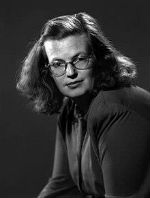 Shirley Jackson was born in San Francisco, California and found herself to be a bit of a misfit, unable to gel with other children. As a result, she spent much of her time writing, much to her mother’s distress.
Shirley Jackson was born in San Francisco, California and found herself to be a bit of a misfit, unable to gel with other children. As a result, she spent much of her time writing, much to her mother’s distress.
Following her graduation, Shirley married philanderer Stanley Hyman and the couple had four children, all of whom would play fictionalised versions of themselves in Shirley’s stories.
Shirley suffered with ill health for most of her life. As well as being overweight and having heart problems, she was a heavy smoker and, towards the end of her life, was seeing a psychiatrist for severe anxiety.
It was her most famous story, The Lottery, first published in The New Yorker on 26 June 1948, which established her reputation as a master of the horror tale.
Shirley’s fifth novel, The Haunting of Hill House, went on to become a critically esteemed example of the haunted house story and was described by Stephen King as one of the most important horror novels of the 20th century.
In 2007, in recognition of her legacy to writing, the Shirley Jackson Awards were established. They are awarded for outstanding achievement in the literature of psychological suspense, horror and the dark fantastic.
Not only that, but her adopted home of North Bennington honours her legacy by celebrating Shirley Jackson Day on 27 June, the day the fictional story The Lottery took place. How great is that?
Anne Rice (1941–)
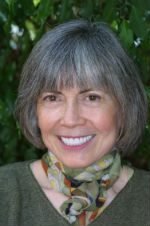 Anne Rice was born Howard Allen Frances O’Brien in New Orleans. She became Anne on her first day of school, when a nun asked her what her name was and she said ‘Anne’.
Anne Rice was born Howard Allen Frances O’Brien in New Orleans. She became Anne on her first day of school, when a nun asked her what her name was and she said ‘Anne’.
Anne met her future husband, Stan Rice, in a journalism class while they were both still at high school. The couple had two children, but lost their daughter to childhood leukaemia. Their son, Christopher, is now an author in his own right.
It was while grieving the loss of her daughter that Anne took a short story she’d written and turned it into her first novel, Interview with the Vampire. Despite its popularity now, the novel initially earned multiple rejections from publishers.
Anne based her vampires on Gloria Holden’s character in Dracula’s Daughter. Of the character, she said:
‘It established to me what vampires were—these elegant, tragic, sensitive people. I was really just going with that feeling when writing Interview with the Vampire. I didn’t do a lot of research.’
To date, her novels have sold nearly 100 million copies, placing her amongst the most popular authors in recent American history.
Anne Rice’s writings have been identified as having had a major impact on later developments within the genre of vampire fiction. Susan Ferraro of The New York Times wrote:
‘Rice turns vampire conventions inside out… Because Rice identifies with the vampire instead of the victim (reversing the usual focus), the horror for the reader springs from the realisation of the monster within the self. Moreover, Rice’s vampires are loquacious philosophers who spend much of eternity debating the nature of good and evil.’
It’s interesting how two of my writers were regarded more as romantic figures than horror figures. Does this mean that, one day, I will be seen as a romance rather than a horror writer? Well, I have penned a darkly romantic tale, and it did win the short story competition at the Wrexham Carnival of Words last year… so… perish the thought!
May fear protect you when the darkness comes.
© Marie Anne Cope 2018
